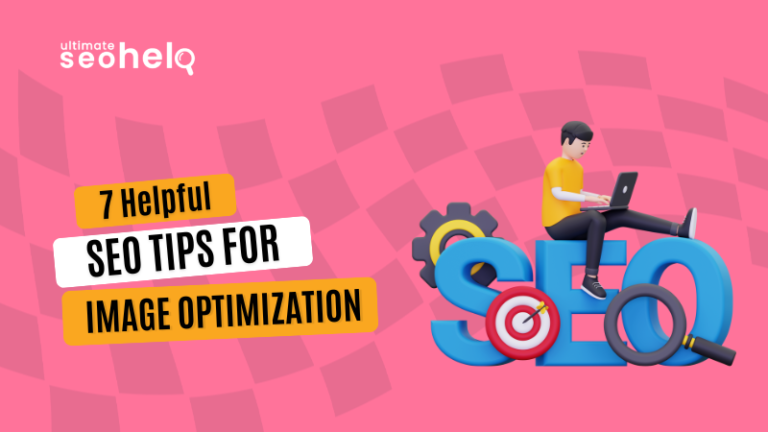SEO involves enhancing your website and its pages for better search engine comprehension and user engagement. A crucial aspect of SEO is image optimization, which entails crafting user-friendly images in the right format, shape, and resolution. Also, labelling images with metadata aids search engines in understanding what the image is all about. This blog will provide 7 valuable image optimization tips so that your SEO efforts don’t go in vain.
7 Actionable Tips for Image Optimization
If you also often question yourself, how do I optimize my image for SEO then know that image optimization depends on many factors. Image size, resolution and relevancy are main factors which can increase user engagement if done right. Let us now see what are the different ways in which you can optimize images on your site.
-
Use Right Format of Image
For SEO-based image optimization, using the right format is crucial. Different image formats have varying compression levels and quality, affecting file size and load times.
So, if you are using Photographs, JPEG is preferred for photograph. And if your image requires better graphics with transparent backgrounds, go for PNG format. For better time optimization, businesses can leverage tools like Adobe and Canva which offer superior compression without compromising quality.
Applying appropriate format for image ensures optimal image rendering, faster loading, and a better user experience, contributing to improved SEO rankings.
-
Resize Images
Resizing images is another essential factor for SEO-based image optimization. Oversized images can significantly increase page load times, leading to a poor user experience and potential decline in website ranking.
By resizing images to their display dimensions, you can reduce file sizes without need to sacrifice image visual quality. This not only improves load times but also let you to write blog and adjust image accordingly, benefiting both users and search engines.
Properly resized images will enhance the overall performance and user-friendliness of your website, positively impacting your SEO efforts.
-
Write Alt Text
We humans can figure out what a content piece is about by reading its title, but search engines can’t. That is why writing appropriate alt text for images is a crucial factor in SEO-based image optimization. Alt text, or alternative text, helps search engines understand the content and context of an image since they can’t read images.
So, if your Alt text is well-crafted, with relevant keywords and descriptive information it can boost the visibility and ranking of your images in image search results.
-
Add Relevant Image According to Article
Search engines favor websites with well-structured and topically consistent content. So, adding only relevant images that complement and support the content of an article is an essential factor in SEO-based image optimization. If you use irrelevant or unnecessary images, users will quickly leave your website and ultimately it will lead to low SEO ranking.
So, make sure to carefully select and include images that directly relate to the subject matter or provide contextual value, to ensure that the visual content enhances the overall quality and relevance of the page.
-
Don’t Use Duplicate Images
Avoiding the use of duplicate images is an important factor in SEO-based image optimization. Search engines usually don’t rank webpages who use duplicate photos without the mentioning of copyright. Duplicate images also increase the overall page weight, slowing download times and negatively impacting user experience. They can be perceived as an attempt to manipulate rankings or as a lack of unique content.
To maintain a high-quality website and avoid potential penalties, it’s essential to ensure that each image on your site is unique and serves a specific purpose within the context of the page or website.
-
Write Image Captions
Writing captions for images provide context and description for images, helping users better understand the content and relevance of the visual elements. Well-crafted captions can enhance the user experience by clarifying the purpose and meaning of an image, especially when the image itself may be ambiguous or require additional explanation.
-
Create Image Sitemap
An image sitemap is a crucial tool for image optimization and improving the visibility of your website’s images in search engine results. It provides search engines like Google with a structured list of all the images on your site, making it easier for them to discover, crawl, and index those images.
This increased visibility can lead to more organic traffic from image searches, potentially driving more user engagement and conversions.
Conclusion
Users engage with webpages more if it has visual appealing image or video content. While videos are of heavy size and take time to load, photos can load quickly. But they require optimization that can make them user friendly. So, if you’re SEO expert don’t forget to optimize images on your website. You can go through our 7 image optimization tips that we discussed above. To know more contact Ultimate SEO Help.


Comments are closed.